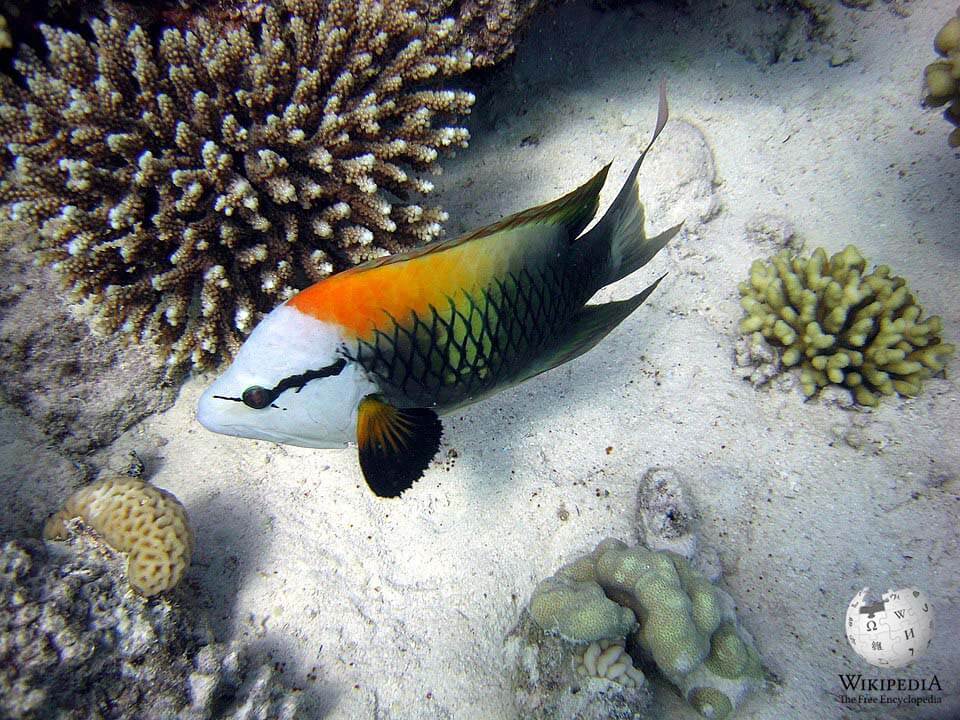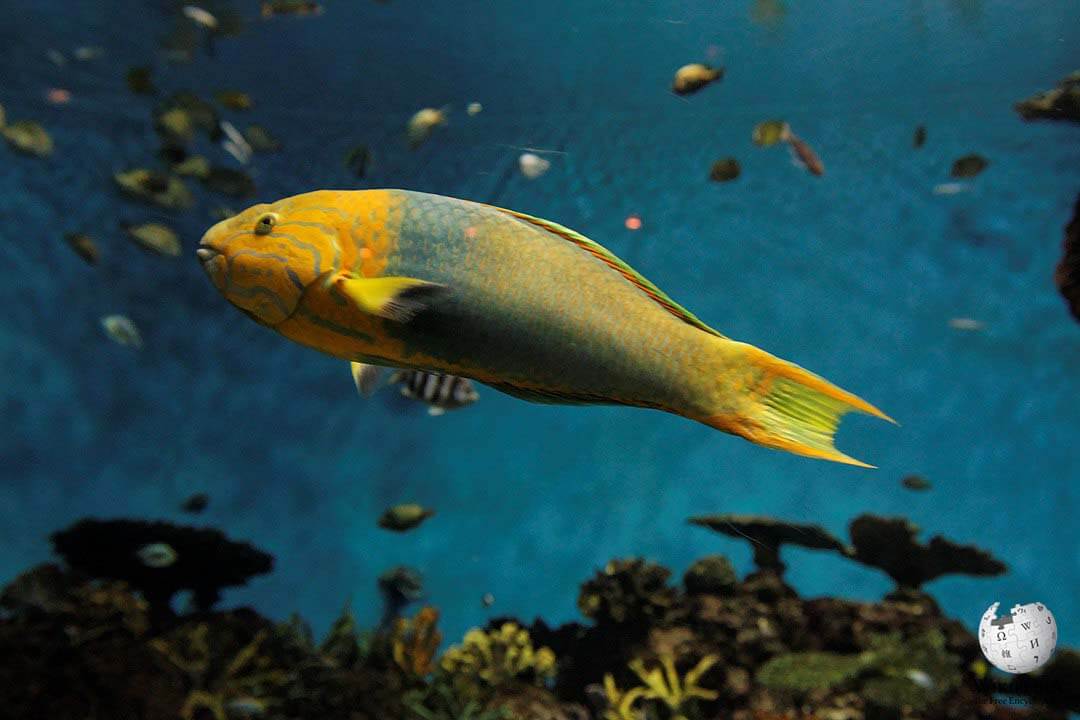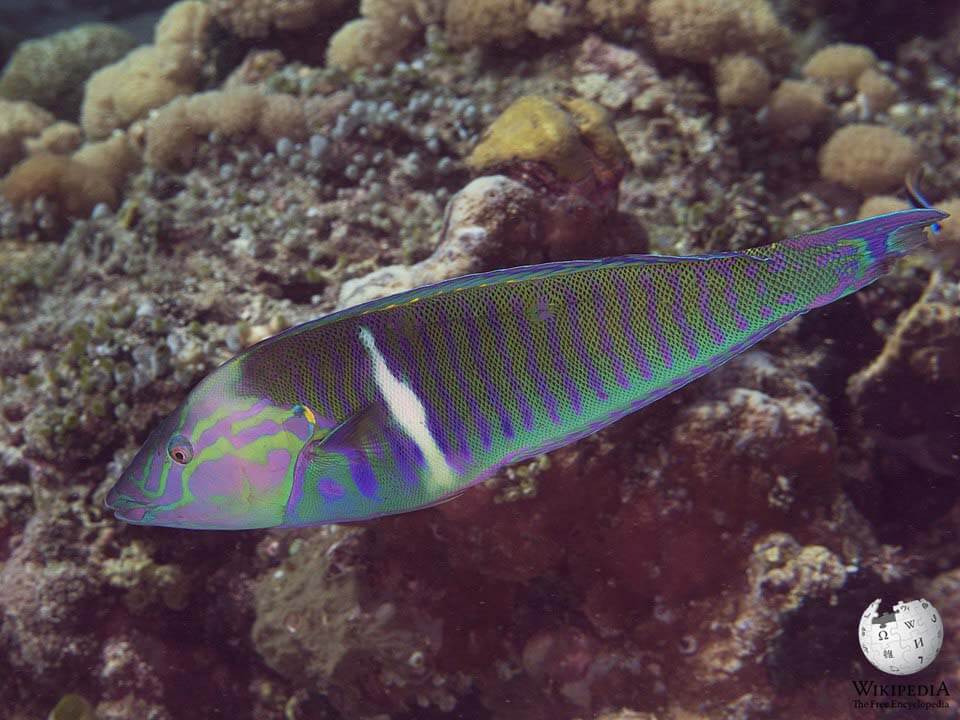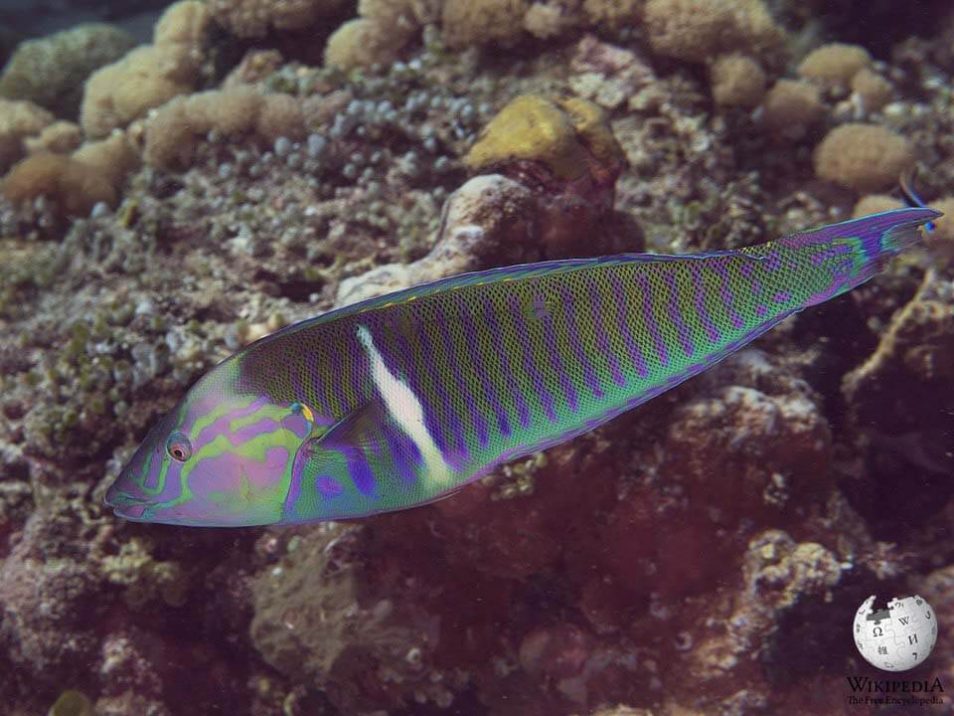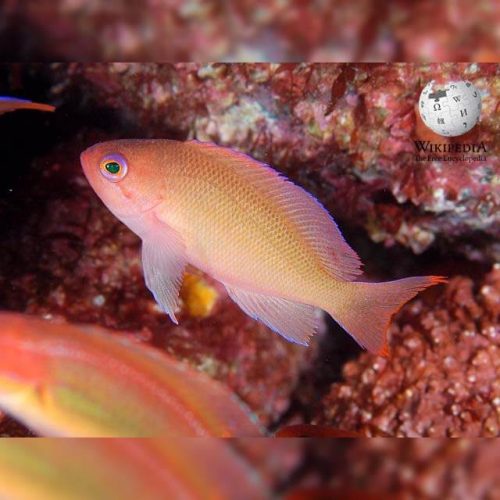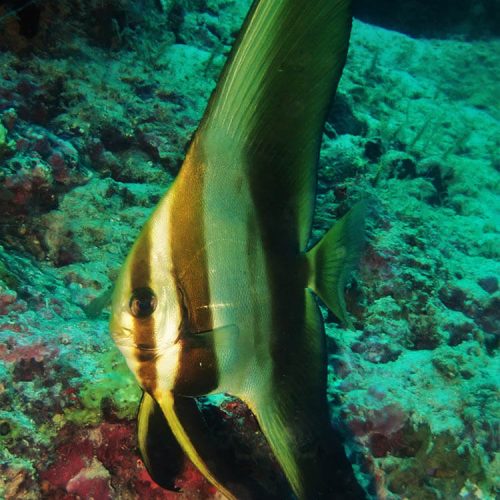Contents
Hologymnosus doliatus, commonly called Pastel ringwrasse , is a marine ray-finned fish belonging to the family Labridae, the wrasses, which is found in the Indo-Pacific area.[1][3]
Description
Hologymnosus doliatus has a long, slender body covered with small scales, although it has a naked head. The males are bluish-green to pale reddish marked with lavender bars, they have a pale band to the rear of the pectoral fin and orange lines mark the head. Females are bluish, greenish or greyish and have 20-23 orange bars along their flanks with a bluish-black spot on the posterior edge of the gill cover. The juveniles are whitish in colour and have three thin orange-red stripes.[4] The dorsal fin has 9 spines and 12 soft rays while the anal fin has 3 spines and 12 soft rays. They can grow to a length of 50 centimetres (20 in).[5]
Distribution
Hologymnosus doliatus is found in the Indian and Pacific Oceans from East Africa to South Africa east to Samoa and the Line Islands, north to Japan and south to the Great Barrier Reef, Lord Howe Island and New Caledonia.[1] In Western Australia it reaches as far south as Ningaloo Reef.[4]
Habitat and biology
Hologymnosus doliatus occurs in seaward reefs where there is mixed sand, rubble and coral at depths which extend to at least 30 metres (98 ft). Juveniles live in groups close to the bottom while the adults occur high above the bottom. The females are also normally found in small groups while the males are solitary and territorial, guarding a large section of reef. This carnivorous species feeds mostly on fishes, which make up 50% of their diet and crustacean, especially shrimps, they will also feed on brittlestars and polychaete worms.[5]
Taxonomy
Hologymnosus doliatus was originally, formally described as Labrus doliatus in 1801 by Bernard Germain de Lacépède in Volume 5 of his Histoire naturelle des poissons based on a drawing by the French explorer and naturalist Philibert Commerson (1727-1773).[6] In 1801 Lacépède created the genus Hologymnosus and designated a species, Hologymnosus fasciatus, he had just described as its type species,[7] this was later shown to be a synonym of H. doliatus.[2]
Human usage
Hologymnosus doliatus is collected for the aquarium trade and is taken by small scale, subsistence fisheries.[1]
References
- ^ a b c d Yeeting, B. (2010). "Hologymnosus doliatus". IUCN Red List of Threatened Species. 2010: e.T187527A8558884. doi:10.2305/IUCN.UK.2010-4.RLTS.T187527A8558884.en. Retrieved 19 November 2021.
- ^ a b Eschmeyer, William N.; Fricke, Ron & van der Laan, Richard (eds.). "Species in the genus Hologymnosus". Catalog of Fishes. California Academy of Sciences. Retrieved 12 January 2020.
- ^ Randall, J.E., 1986. Labridae. p. 683-706. In M.M. Smith and P.C. Heemstra (eds.) Smiths' sea fishes. Springer-Verlag, Berlin.
- ^ a b Bray, D.J. (2018). "Hologymnosus doliatus". Fishes of Australia. Museums Victoria. Retrieved 12 January 2020.
- ^ a b Froese, Rainer; Pauly, Daniel (eds.). "Hologymnosus doliatus". FishBase. August 2019 version.
- ^ Eschmeyer, William N.; Fricke, Ron & van der Laan, Richard (eds.). "Labrus doliatus". Catalog of Fishes. California Academy of Sciences. Retrieved 12 January 2020.
- ^ Eschmeyer, William N.; Fricke, Ron & van der Laan, Richard (eds.). "Hologymnosus". Catalog of Fishes. California Academy of Sciences. Retrieved 12 January 2020.
External links
- http://www.marinespecies.org/aphia.php?p=taxdetails&id=219001
- Photos of Hologymnosus doliatus on Sealife Collection

